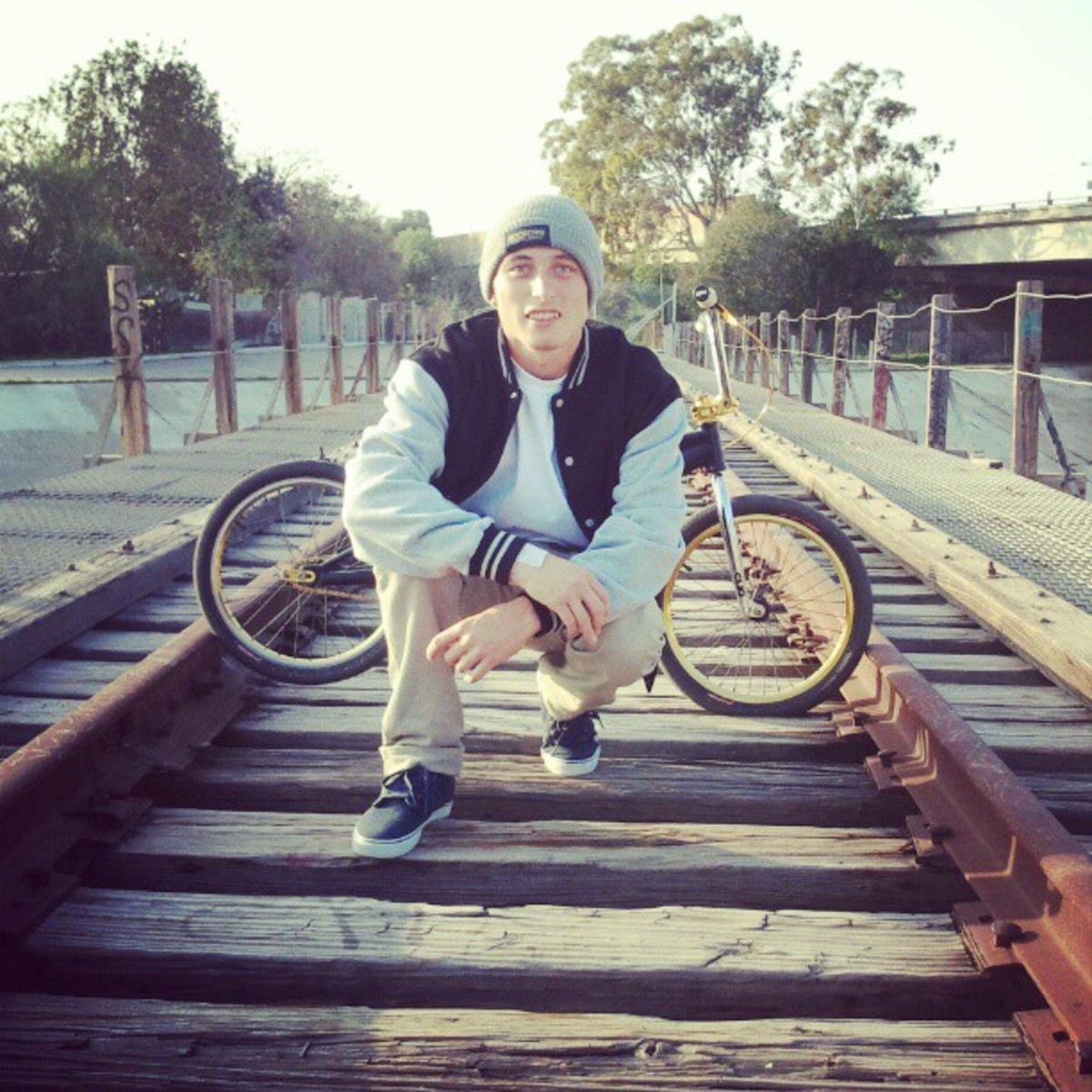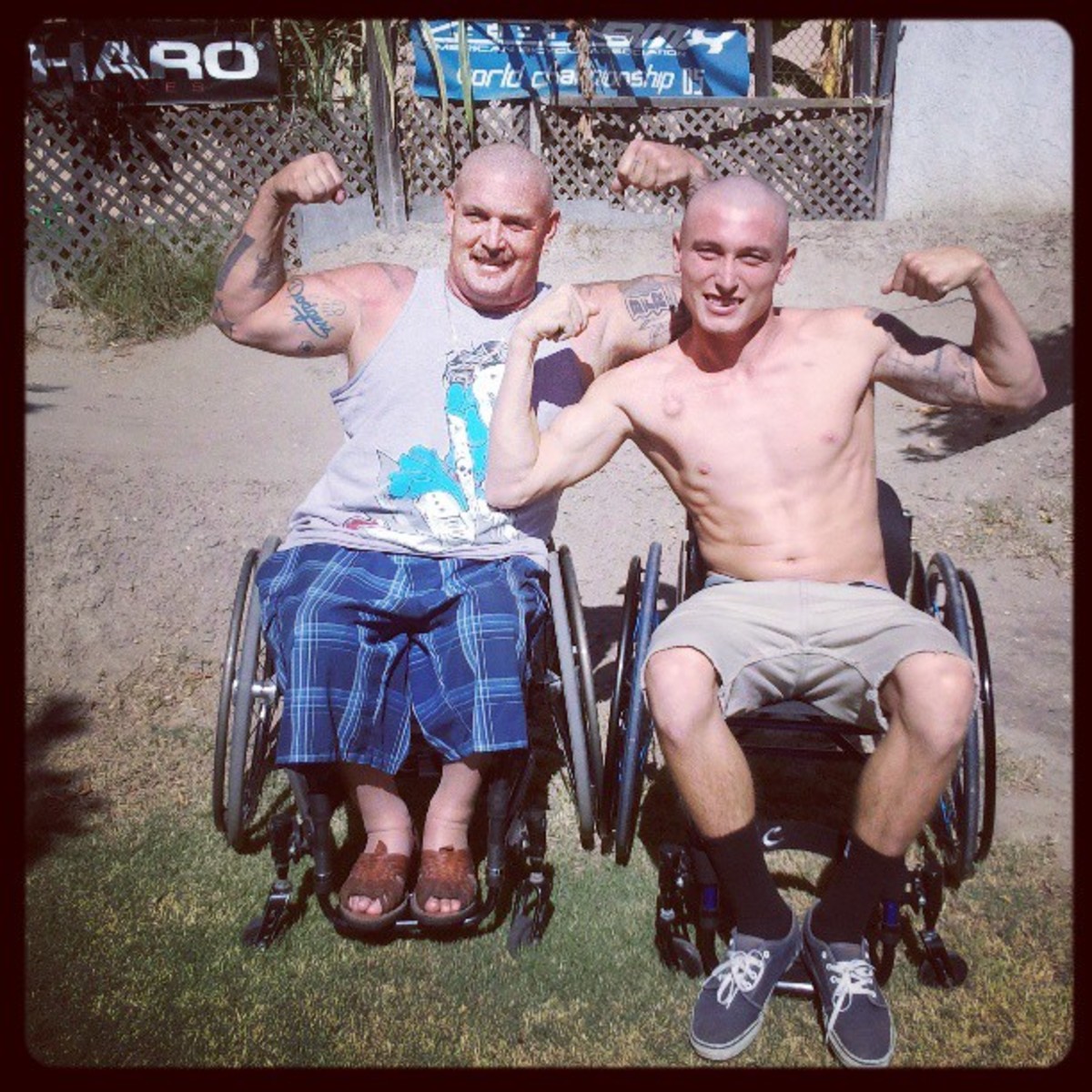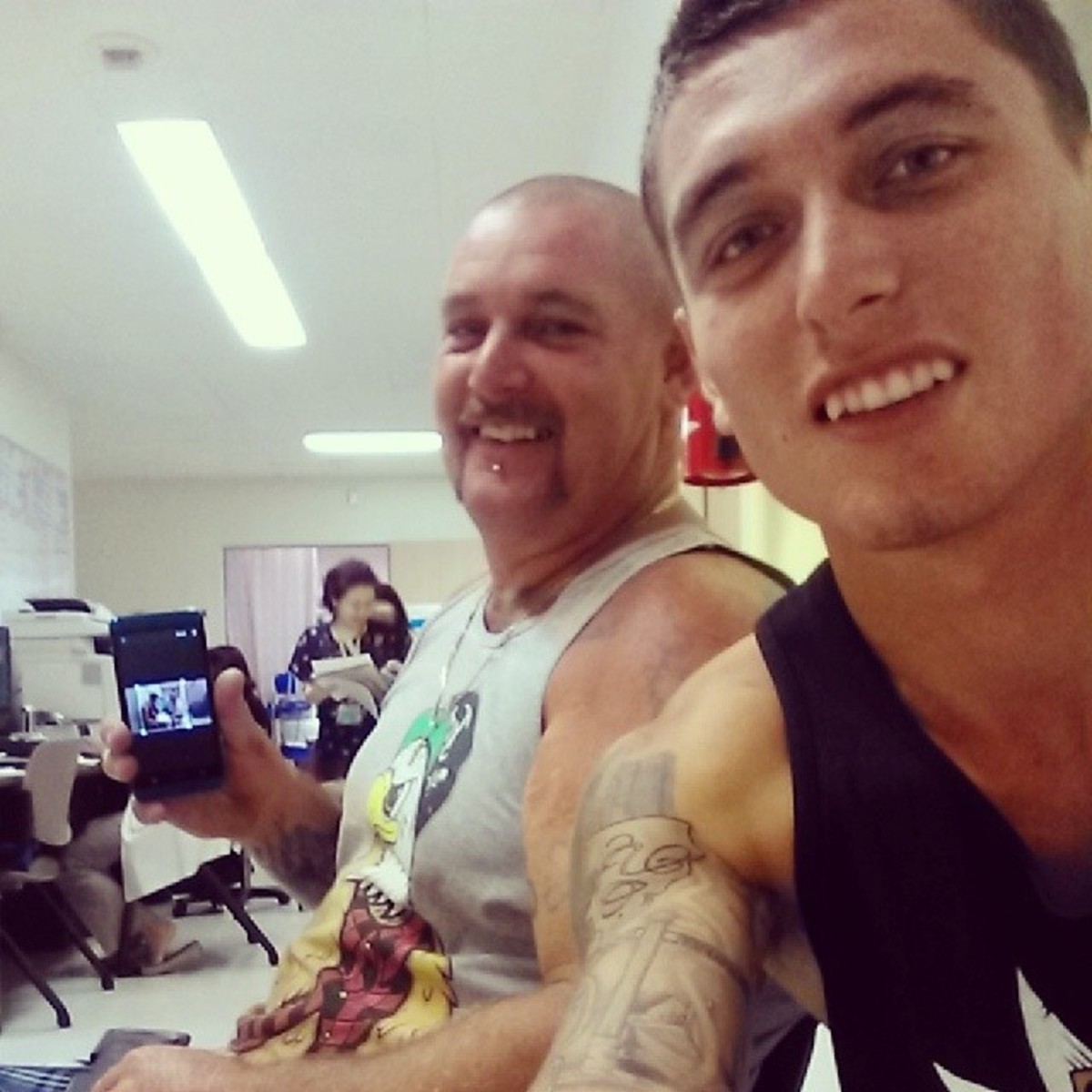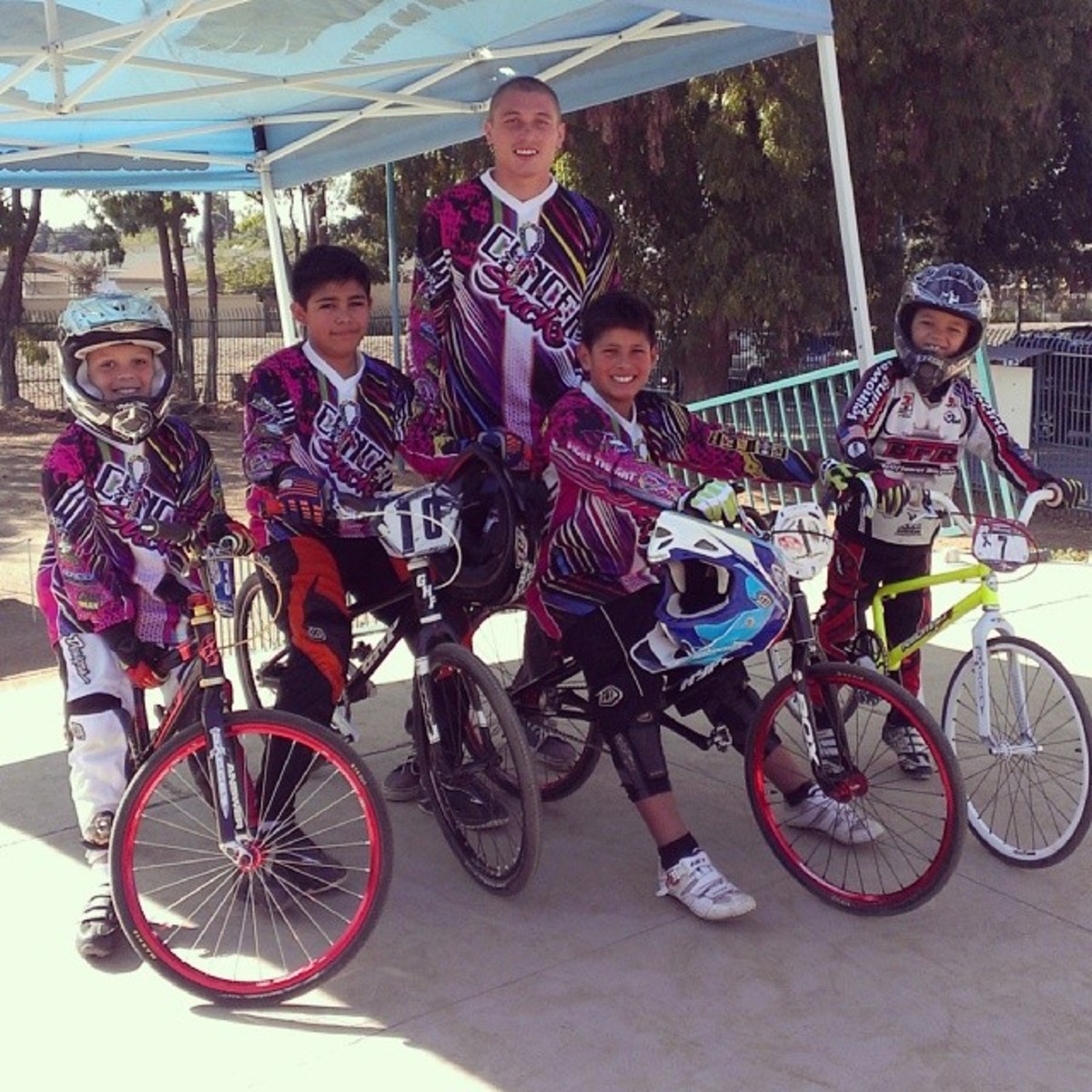Paul Wassenaar's turbulent journey back to BMX racing

Tammy Estep was worried when she saw Paul Wassenaar come off the BMX track struggling to breathe. She followed him back to his family’s RV—the RV outfitted with hand controls that every summer Paul’s father, Jeff, would labor to get himself into; the RV in which he had driven his children to every one of the 48 contiguous states except Maine—and when she found Paul laying prostrate on the floor of the motor home, his racing gear pulled partly off because he was flushed and overheated, he was weeping.
“I’m just so tired,” Paul said, choking back the tears.
Tammy, a longtime family friend who had known Paul Wassenaar for almost all of his 20 years; since he had first earned the nickname “Balls Out” as a kid because he did everything to the fullest, no challenge too difficult for him to meet. The youngest of three, Paul had always been headstrong, always trying to prove himself worthy. Seeing him like this broke Estep’s heart.
It was a late Saturday afternoon in early May of this year. Paul had already completed three preliminary races and had qualified for the main event. He was one of just eight riders to do so, an occurrence that is standard in just about every race Paul competes in, but this time was noteworthy.
He made it two-thirds of the way through the main event, before retreating back to the RV. He knew the reason, but still couldn’t really understand why he didn't have the stamina, or the strength, he was accustomed to.
The former world champion rider was pushing himself well past his limits in his current state.

Even though his recovery had just begun—it was only his first race back—Paul wanted to get on to that podium. He wanted to place. He wanted to justify all the hardships his father went through in the years of raising him, the sacrifices that got him to this point. To demonstrate that he was still the same rider that he had been before his father found the lump on his neck.
“You don't have anything to prove, Paul,” Estep said to the boy whom she considered to be an extension of her own family. “You’ve proved it. You’re going to be fine, it’s going to be fine.”
*****
It was the Thursday after Labor Day, 2013, and Paul, then 19, was sitting at his kitchen counter. Four days earlier he had finished in second place at a race in Reno, just one point short of making it onto the highest step of the podium. He was riding as well as he ever had.
During that race, Paul noticed that his t-shirts were fitting a little snug around the neck. He didn’t think anything of it at the time. He felt fine.
Besides, he was nearing the $4,000 prize money milestone for the year, which would bump him up to the “Elite Pro” level and put him at least in contention for the 2016 Olympic Games. That was the dream.
Back home in Bellflower, Calif., however, Jeff Wassenaar, had just gone grocery shopping. He was in his manual wheelchair and was making his way up the ramp that connects his driveway to his back door. Paul was at the counter eating cereal.
“What, you’re not going to help me with the groceries?” Jeff said to his son.
When Paul turned his head to answer his father, Jeff noticed something on the left side of his son’s neck. Raising the kids on his own, Jeff knew his children very well. This was something new.
“What the hell is that?” Jeff said. “That don’t look right.”
Paul shrugged it off as “neck muscles.” Jeff said, “If it was muscles, you wouldn’t have it on just one side,” and so he wheeled over to touch it. Rock hard.
Jeff gave Paul his medical card.
“Go to the hospital, you’re a big boy,” Jeff said to his son.
Waiting in the emergency room at the hospital, Paul was not concerned. He posted a selfie of himself in a hospital gown with the caption: “Not how I wanted to spend my Thursday morning in the ER.” Friends and fans soon chimed in with well wishes, asking him what was wrong. He mentioned the lump, and said so far it was “just a swollen lymph node”
Stone Edler's inspirational fight for success in Motocross
“Make sure they check and confirm it’s not lymphoma,” one of the comments read. It was the first time Paul had heard the word. When he looked it up on his phone—still waiting for the MRI results—he saw it: cancer.
“All I knew about cancer was death,” Paul remembers now.
Three hours had passed and Jeff had still not heard from his son. Growing anxious, he decided to go to the hospital himself. Once he arrived, the doctors told them that Paul had a large neck mass and that he would need a biopsy. However, the biopsy could not be be performed there, as that hospital didn’t accept the family’s insurance.
Father and son left and went to a community hospital nearby, where a needle biopsy was done. The results were inconclusive. They stayed there for three nights, Jeff waiting by Paul’s bedside the whole time. They tried to joke around and stay upbeat.
The doctors informed them that they would need to cut open the mass, take a sample, and run further tests to tell for sure what they were dealing with.
Paul told his father off-handedly that he hoped it wasn’t lymphoma.
“Regardless of what it is, we’re going to do whatever we have to,” Jeff said to his son in the hospital room. “We’ll jump through the hoops. We’re going to hammer it, together, and then we’ll be better.”
Those were not empty words coming from Jeff Wassenaar.
*****
It was Friday, October 14, 1994, 5:45 in the morning, and Jeff was driving his Buick Regal to Bellflower, a nearby town where he worked for a construction company loading supplies onto a truck. He was at a traffic light, the third car in the line, when a man wearing a hat and a bandana covering his face came up to Jeff’s passenger side window.
Jeff saw that the man had a gun pointed directly at him. Reflexively, he threw his arms in the air, a sort of silent surrender. The man at the window did not care. Without saying one word, he opened fire.

The first shot pierced Jeff’s right arm on its path straight into his neck. The succeeding three shots caught him in the side.
The assailant then walked around to the driver’s side window and told Jeff to get out of the car. It was then that Jeff realized he could not move. So the man reached in, unbuckled Jeff’s seat belt, and tossed him out of the car.
He then took the car and sped off, leaving Jeff lying motionless, and soon unconscious, on the street.
*****
A week and a half later Jeff awoke in a hospital room. He had a tube sticking down his throat and a ventilator was helping him to breathe. He tried to talk, but quickly realized he was unable. He tried to piece together what had happened to him, but it was all a blur.
He soon found out that he had lost his spleen and a kidney and was paralyzed from the waist down. When doctors first told him the news, he simply told them to fix it. He soon came to accept that they couldn’t. He was 22 years old.
Although Jeff no longer had the use of his legs, what he did have was three young children. His daughter, Belinda, was three years old, Jeffrey Jr. was two, and his youngest, Paul, just 11 months.
The children’s mother and Jeff were soon married, Jeff saying the words “I do” from his wheelchair. However, a few years later she was out of their lives and Jeff was granted full custody, leaving him the task of raising three kids on his own as a paraplegic.
Behind the Body: BMX rider Nigel Sylvester
Jeff himself had loved racing bikes as a kid, loved the thrill of it, the competition, the adrenaline rush as he went over jumps and around curves. His own parents divorced when he was a teenager, halting his amateur BMX career and forcing him to move in with his grandparents and start working.
When Jeff became paralyzed, he was determined not to let his own limitations hinder his children’s lives in any way.
“They pushed me to do things,” Jeff says about his children. “It would help me not really concentrate on me and what I couldn't do, but to just really concentrate on life. I didn't have time to dwell because my major concern was my kids.”
It wasn’t easy. Jeff would pack up his car, putting his wheelchair in the back seat and the one bike that the kids initially shared in the trunk. The four of them would trek to nearby racetracks, father imparting his passion to his kids.
Paul still remembers the effort that Jeff went through all those years. He knows it was not easy for his dad, who also took on an office job for an electrical company, before being laid off a few years ago.
Paul thinks about these things when he’s practicing. It has always motivated him to be the best he could be.
*****
At first Paul was not the best, actually he was the worst. At least among his siblings.
That did not sit well with him. He did not care that he was the youngest, did not care that his dad made him wait until he was four years old to start racing, so his siblings were already far ahead of him developmentally. He had a single-track mind; he was determined to be the best.
“I wanted to be better than them,” Paul says. “I would push myself to try beat them because I didn't want to be the one that always was coming in last. It killed me that I was always getting beat.”
That did not last long. Paul was a powerful rider, gifted athletically, and with a grace on the track that came from growing up on a bike, Paul was soon the best rider in his family, and one of the best in the country. By the time he was nine, Paul was ranked in the top 10 in the nation for riders in his age group.
During the summers when the kids were young, the family would pack into their RV and head out to tour the country, entering races along the way. Often friends would join them to offset costs, Tammy Estep’s own son and daughter among them. The Wassenaar family would sleep together on a queen bed and a pull-out couch, while the others would sprawl out in sleeping bags on the floor.
In early 2009, when Paul was 15 and amid a career year as an amateur rider, he traveled to Texas to attend a qualifying event for the upcoming UCI BMX World Championships. Paul qualified with ease. The championships were a few months later in July, and would take place in Adelaide, Australia.
Helped by one of Paul’s sponsors, a Bellflower bike shop, and donations from family and friends, Paul was able to attend. But for the first time Jeff would not join his son—it was too expensive.
Paul was excited when he left, but his expectations were tempered; he knew that 80 of the best racers from around the world would be there. Besides, he was racing in the 16-year-old group even though he was only 15; his November birthday qualified him.
His goal going into the competition was just to make the main event. He figured ranking in the top eight in the world would be pretty cool.
When he accomplished that feat he was ecstatic, so much so that when he entered the main event he was as relaxed as he could ever remember being before a race.
He cruised to a win, and at 15 years old became a world champion.
“I honestly couldn’t believe that it happened,” Paul says.
His first instinct was to call his dad. It was two in the morning West Coast time, but the wake-up call was the best Jeff ever received.
“He was speechless too,” Paul says. “He started calling everyone else in the family and waking them up, too.”
Although Jeff wouldn’t allow his son to turn pro until he had graduated from high school three years later—ensuring that he got an education and knew that racing was what he wanted to do with his life—Paul, now having earned the new nickname “World Wide,” was well on his way to a promising career.
*****
Non-Hodgkins Lymphoma, Stage 2, Category A, was the diagnosis doctors gave to Paul as he sat in the hospital room with his father.
“I have cancer, but cancer doesn’t have me—that became the quote I lived by,” Paul says.
A port was soon installed into Paul’s chest so that chemotherapy treatments could be administered. They began in November, four cycles every other Tuesday. Each time Paul went to the hospital he had four separate medications injected into the port, each treatment taking at least an hour, and each finished off with a full flushing of his system through an IV. Each time, Jeff was there with him.
During the nearly five hours he would spend in the hospital, Paul would think obsessively about racing. He would spend his time watching Youtube videos of the riders he had beaten in Australia in 2009. Many were now in the “Elite pro” class, racking up wins around the world.
“That’s what kept me going,” Paul says. “It motivated and made me hungry watching them… I beat these guys before, I can beat them again. If they're doing that good, I could do even better. Everybody is beatable, it’s just how hard you want to train.”
But soon the chemo took its insidious hold. Paul’s hair began to fall out— the morning that he woke up and noticed, he rubbed his hands on his head and gave his father “a shower” of loose hair— he felt increasingly nauseated and sapped of his normally boundless energy.
Doctors did not want Paul to ride his bike while he was going through treatments. If he fell on the port in his chest and damaged it, it could cause internal bleeding. But they soon found out that telling Paul he could not ride a bike was a futile endeavor.
“Because of his determination he would just not stop riding,” says Morris Asch, one of the surgeons who installed Paul’s port. “They [the oncologists] were just begging him not to ride, and he said I just got to keep riding.”
Paul fought through his lethargy and continued his weight training in his garage—he was no longer able to afford a gym membership after the costs of his hospital bills started to stack up. He refused to stay cooped up indoors and would often go to the track and get on his bike.

Jeff wouldn’t allow him to compete, but he permitted some light riding. He knew it was something Paul had to do. But, when Paul fell and landed on the port—not causing any damage—Jeff deemed it too dangerous for him to continue riding on the track.
This only inspired Paul to start digging his own mini dirt track in his backyard. In a hat and ample sunscreen—as the chemo left him more susceptible to damage from the sun—Paul completed the track in a week and was soon back on the bike.
After two months, Paul was finished with the chemotherapy. Next up was 12 days of radiation, during which Paul had to wear a white, custom-fitted mesh mask over his face while lying on a hospital bed. The mask would then be pinned down to the bed so that Paul would not be able to move his head or neck, allowing the radiation to focus directly onto the mass.
The radiation left Paul without any saliva in his mouth and a throat so sore he needed medication to assist him in swallowing. Eating hurt. He was supposed to frequently drink water to help lubricate his mouth, but drinking hurt. It felt like his mouth was burning.
“I think his grit and determination really allowed him to recover faster and move on faster,” says Asch. “ He just went through it as fast and as well as humanly possible. I think that’s a testimony to his youth, his fitness, and his mental toughness and positive attitude.”
In January, when all the treatments were finished, Paul and Jeff went back to the hospital for a PET scan. It would test if there was any activity left in the tumor, whether the cancer had been eradicated or not.
When the scan was done, the doctors told him he was cancer-free.
“So, can I get the port out?” Paul said immediately, his mind already having moved on to the possibly of racing again.
He had to wait another another four months, however, importuning the doctors at every monthly visit. Finally the port came out.
*****
When Tammy Estep found him on the floor of the RV struggling to breathe, she tried to persuade him not to finish the race.
What Paul had gone through the last eight months had taken its toll on him. He had lost strength and muscle mass, his stamina and endurance were nowhere near what he was accustomed to.
Paul didn’t want to quit, however. They found a compromise. He completed the third leg of the competition, finishing the race—but he cruised through it slowly.
“After that, I realized what I needed to work on, what I needed to start training for,” Paul says. “I wanted to get back to where I was before.”

Four months later, Paul was back in Reno; the last race he competed in before Jeff found the mass. It had been a full year.
He wanted to show everyone that he was back and that he was better than ever.
So it should be no surprise that when the race ended, there was Paul back on the highest step of the podium.
“Paul and Jeff, that’s what BMX is about, that’s the backbone of our sport,” said Shannon Gillette, a representative of USA BMX. “They’re the reason we all show up to work everyday.
A couple of weeks later, back home in Bellflower, Paul is encouraging a whole new generation of kids at the clinic that he runs every other Sunday. It takes place at the local track that Jeff helped open in 2001, where he now announces the races from his wheelchair. Throughout Paul’s treatments, he never skipped a Sunday with the kids.
The last drill that Paul runs every time is the same. He places all of the participants in the starting gate at once, forcing them to fight through the congested track. He wants them find their way through. It’s not always easy, there’s not always a clear-cut way, and you have to make those decisions. It’s more than just skill—it’s attitude.
